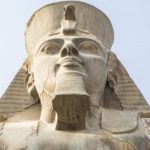 Weird Stuff
Weird Stuff  Weird Stuff
Weird Stuff  Our World
Our World 10 Archaeological Discoveries of 2025 That Refined History
 Weird Stuff
Weird Stuff 10 Fascinating Facts You Might Not Know About Snow
 Miscellaneous
Miscellaneous Top 10 Things Crypto Was Supposed to Change & What Actually Did
 History
History 10 Huge Historical Events That Happened on Christmas Eve
 Music
Music 10 Surprising Origin Stories of Your Favorite Holiday Songs
 History
History 10 Less Than Jolly Events That Occurred on December 25
 Weird Stuff
Weird Stuff 10 Funny Ways That Researchers Overthink Christmas
 Politics
Politics 10 Political Scandals That Sent Crowds Into the Streets
 Weird Stuff
Weird Stuff Ten Bizarre Facts About The Doge Meme
 Weird Stuff
Weird Stuff 10 Weird Things People Used to Do at New Year’s
 Our World
Our World 10 Archaeological Discoveries of 2025 That Refined History
 Weird Stuff
Weird Stuff 10 Fascinating Facts You Might Not Know About Snow
Who's Behind Listverse?

Jamie Frater
Head Editor
Jamie founded Listverse due to an insatiable desire to share fascinating, obscure, and bizarre facts. He has been a guest speaker on numerous national radio and television stations and is a five time published author.
More About Us Miscellaneous
Miscellaneous Top 10 Things Crypto Was Supposed to Change & What Actually Did
 History
History 10 Huge Historical Events That Happened on Christmas Eve
 Music
Music 10 Surprising Origin Stories of Your Favorite Holiday Songs
 History
History 10 Less Than Jolly Events That Occurred on December 25
 Weird Stuff
Weird Stuff 10 Funny Ways That Researchers Overthink Christmas
 Politics
Politics 10 Political Scandals That Sent Crowds Into the Streets
 Weird Stuff
Weird Stuff Ten Bizarre Facts About The Doge Meme
10 Milestones in the Evolution of the New Testament
The ordinary churchgoing Christian probably has a fuzzy idea of how the New Testament came about. Contrary to Dan Brown’s claim in his novel The Da Vinci Code, the Council of Nicea in AD 325, which Constantine summoned to settle Christological disputes, did not create the NT canon. This notion probably stemmed from a legend that at the council, the bishops gathered all the books together on a table and prayed that God would show which were genuine and which were spurious, after which all the spurious books fell to the floor.
In reality, no instant miracle gave us the NT. Instead, it was the result of the decisions of bishops and councils (none ecumenical save the last) spanning centuries. There were serious debates on which books to include and which to keep out. Universal approval of the final contents of the NT was a hard-won thing.
Related: 10 Historical Discoveries That Corroborate with the Bible
10 The Need for a New Testament
The earliest Christians preached their faith from Jewish scripture in its Greek translation, the Septuagint. It had authority in doctrine, practice, and moral instruction. They believed that the ancient writings prefigured Christ, and Jesus himself was quoted as saying, “Search the scriptures, for you think in them to have life everlasting; and the same are they that give testimony of me” (John 5:39).
The apostle Paul used such passages to evangelize the Gentiles: “Now to him that is able to establish you, according to my gospel, and the preaching of Jesus Christ… which now is made manifest by the scriptures of the prophets” (Romans 16: 25-26). As long as the apostles were alive and directly guiding the church, there was no real need for additional scripture.
But Christians also realized that theirs was a distinct revelation. From about the mid-1st century, about 20 years after Jesus’ death, they began to produce their own writings, encompassing genres such as gospels, letters, theological treatises, and “acts” of apostles. These were valued but not yet gathered into a single collection.
But as the apostles died off, believers began to see the need for written records of apostolic guidance to lead later generations of the church and settle questions of doctrine and practice in the absence of a living, authoritative voice. The idea of a Christian “canon” (Greek “kanon” = measuring rod) of scripture took shape.[1]
9 Pre-Gospel Christianity
Stories about Jesus are believed to have circulated through oral traditions before Mark, the first Gospel, was written some 40 years after Jesus’ death. Strangely, the Apostle Paul, the first Christian writer, appears to have no familiarity with such traditions. He never tells us anything about Jesus’ life and ministry—no miracle stories, Gospel sayings, or parables. Though the core of Paul’s preaching was “Christ crucified” (I Cor. 1:23), he never gives us details of that event—no Gethsemane, no trial before the Sanhedrin, no Pilate, and no Calvary.
Paul’s puzzling silence notwithstanding, by the time of Papias, the bishop of Hierapolis at the beginning of the 2nd century, we see a glimmer of written gospels now in circulation. Papias attests that “Mark, having become the interpreter of Peter, wrote down accurately, though not indeed in order, whatsoever he remembered of the things said or done by Christ.” He also says, “So then Matthew wrote the oracles in the Hebrew language, and every one interpreted them as he was able.”
It is debatable if Papias was referring to our present gospels of Mark and Matthew, as Mark does have narrative order, and Matthew was originally written in Greek. And if Papias had read Matthew, why was his account of Judas’s death different from Matthew’s? “Judas walked about in this world a sad example of impiety; for his body having swollen to such an extent that he could not pass where a chariot could pass easily, he was crushed by the chariot, so that his bowels gushed out.” Papias also cites the story of the woman taken in adultery (John 7:53-8:11) but says it comes from the “Gospel according to the Hebrews.”
Justin Martyr (c. 100–185) knew of Gospel stories but never named the Gospels separately, calling his source instead the “Memoirs of the Apostles.” This suggests a collection of texts not yet designated as “according to” a specific author.[2]
8 The Marcionite Canon
Ironically, the first to collect Christian documents into a canon was a notorious heretic, Marcion of Sinope (c. 95–165). He taught that the creator God of the Jews was a malignant deity and was not the same as the loving God and Father of Jesus Christ. Only the Apostle Paul understood what the gospel was all about. He, therefore, rejected the Jewish scriptures and used an exclusively Christian set of documents.
Marcion’s canon consisted of one Gospel and ten of Paul’s letters. The Gospel was that of Luke’s, but he didn’t call it by that name. The Pauline epistles lacked Hebrews and the Pastorals—I and II Timothy and Titus. It was alleged that Marcion mutilated the gospel’s text and purged it of elements he disagreed with, but this remains unproven. It may be that what he had was simply an unfinished version of Luke.
The church we would later call “orthodox” (having the right belief) could not allow Marcion’s canon to go unchallenged. The church realized it needed to define its faith more precisely and disallow any Marcionite interpretation of Christian texts (as church doctrine had not yet fully matured and gained universal dominance, let’s call it “proto-orthodox”). It decided to appropriate Marcion’s canon and use it to support its own teachings. It would be a New Testament, not superseding but complementing the Old.[3]
7 The Four Gospels
In the second century, the problem was deciding which texts were authoritative and, therefore, “canonical.” Myriads of gospels, epistles, acts, and apocalypses were circulating among the Christian communities. Gospels were purportedly written by the apostles Thomas, Philip, James, Judas, and even Mary Magdalene.
The Gospel of Peter, in particular, was very popular. Even by the end of the second century, it was still being used by the church at Rhossus in Cilicia, and Serapion, the bishop of Antioch, had given his approval to it. Upon taking a second look at the gospel, Serapion realized that it contained heretical docetic ideas. Docetists believed Jesus wasn’t really human—he only appeared to be. Serapion immediately withdrew his approval and condemned the Gospel of Peter.
By such methods, the church weeded out texts that did not align with its concepts of Jesus and the contours of the faith it defined for itself. It was Irenaeus, the bishop of Lyon in Gaul, who first insisted that only four gospels were canonical—four anonymous texts to which were assigned the names of Matthew, Mark, Luke, and John. No one knows who the real authors were.
Irenaeus adduced mystical reasons for this number: “It is not possible that the Gospels can be either more or fewer in number than they are. For, since there are four zones of the world in which we live, and four principal winds…it is fitting that (the Church) should have four pillars, breathing out immortality on every side, and vivifying men afresh…” (Against Heresies III.11.8). He also cites the four creatures of Ezekiel’s chariot vision, hence giving us the symbolism of the four evangelists—an angel (Matthew), a lion (Mark), an ox (Luke), and an eagle (John).[4]
6 Scribal Alterations
The proto-orthodox Christians not only collected documents that supported their doctrine, but it appears they doctored the texts to make them say what they wanted them to say. Though many conservative Christians don’t like to admit it, much of the New Testament text has been corrupted to one degree or another by scribal activity.
The proto-orthodox were up against three main opponents—the Adoptionists, who denied Jesus was God; the Docetists, who denied Jesus was human; and the Separationists, who said Jesus was a human into whom the spiritual Christ entered at his baptism and left at his crucifixion. Proto-orthodox scribes, therefore, “fixed” the texts so they could not be used by these groups to support their views.
Space limits us to only two examples. In Matthew 1:16, where Mary gives birth to Jesus, “who is called Christ,” scribes simply made the text say that to Mary was born “Jesus Christ,” emphasizing that Jesus and Christ are one and the same being (against the Separationists) and that the one born as a human was also the divine Christ (against the Adoptionists and Docetists).
Mark 1:10 in the Bible today speaks of the “Spirit as a dove descending, and remaining on him (Jesus)” at his baptism. But the original, as attested by older manuscripts, says that the Spirit descended “into” Jesus—a smoking gun for the Separationist argument that the spiritual Christ possessed the body of the human Jesus. Obviously, the proto-orthodox had to change prepositions.
There are many other examples of such sleight-of-hand. In the third century AD, Origen lamented the widespread scribal practice of altering text: “It is an obvious fact today that there is much diversity among the manuscripts, due either to the carelessness of the scribes, or to the perverse audacity of some people in correcting the text, or again to the fact that there are those who add or delete as they please, setting themselves up as correctors.”[5]
5 Forgery in the New Testament
In II Thessalonians 2:2, the author, who introduced himself as Paul, warns the church not to be misled by letters “as if from us.” He was aware that forged letters allegedly from Paul were in circulation. It is, therefore, a great irony that II Thessalonians itself is now largely regarded as forgery. The author was simply directing suspicion away from himself.
In a world with low literacy, one could easily get away with forgery undetected. Writing using the name and credentials of someone else was employed to good effect by Christians to push forth their theological views. There is a whole category of New Testament writings that scholars label “pseudepigrapha,” which is just a polite term for forgery.
Of the 13 Pauline epistles, six are widely considered to be forgeries: II Thessalonians, Ephesians, Colossians, I Timothy, II Timothy, and Titus. Scholars have detected forgery by comparing stylistic and thematic elements to the genuine letters of Paul. II Thessalonians, for instance, appears to be consciously copying the style and wording of I Thessalonians but departs from its theme. The genuine Paul emphasizes urgency at the imminence of Christ’s coming, but pseudo-Paul backtracks, saying essentially, “Relax, he isn’t coming yet.”
Scholars also see clues in differences in writing style. Colossians, for example, uses long, complex sentences very uncharacteristic of Paul. The same can be said of Ephesians—1:3-14 in Greek is one long, continuous sentence that could not have come from Paul.
Since the ancient world had no experts in fraud detection, these texts slipped into the New Testament. Even Paul’s most zealous fan, Marcion, was taken in. But other writings did invite suspicion. Even in antiquity, the authorship of Hebrews has been debated, for its attribution to Paul is undermined by stylistic and thematic differences from genuine Paul. “God only knows” who wrote the epistle, remarked Origen. But this makes Hebrews an anonymous document, not a pseudepigraph.
The main argument against Jude was that it quotes from two apocryphal Old Testament books, the Book of Enoch and the Testament of Moses. It is also concerned with being faithful to tradition, indicating a late date of composition and not by a first-generation Christian like Jude.[6]
4 Who’s in, Who’s Out
By the third century, the contents of the New Testament were still in flux. Clement of Alexandria (c. 150–c. 215) considered all our present NT authoritative except for Philemon, James, II Peter, II John, and III John. But in addition, he also accepted the Gospel of the Egyptians, the Gospel of the Hebrews, the Traditions of Matthias, the Epistle of Barnabas, the Shepherd of Hermas, I Clement, the Didache, the Preaching of Peter, and the Apocalypse of Peter.
Tertullian (160–240), a prolific early Christian author from Carthage in Roman Africa, used our NT except for II Peter, James, II John, and III John and also used the Shepherd of Hermas. Interestingly. Tertullian reported that a presbyter in Asia was caught forging the Acts of Paul and was removed from office.
Origen (185–254), like the others, expressed doubts about James, II Peter, II John, and III John, but regarded as canonical the Gospel of Peter, the Gospel of the Hebrews, Epistle of Barnabas, the Shepherd of Hermas, I Clement, the Acts of Paul and the Didache.
Together with Hebrews, Jude, and Revelation, James, II Peter, II John, and III John are designated the antilegomena (“books spoken against”)—works that were initially disputed yet eventually were made canonical. Tertullian and Clement never mention II Peter, probably because it hadn’t been written yet. Among other things, modern scholars have pointed out that it is highly doubtful that the cultured Greek of these epistles was written by the real James, Peter, and John, Aramaic-speaking Palestinian Jews who Acts 4:13 characterized as “unlearned and ignorant.”[7]
3 Revelation Squeezes Through
By the fourth century, the NT as we know it today was taking its final shape. Even the aforementioned disputed epistles overcame their lukewarm reception and were welcomed into the canon. The only holdout now was the bizarre book of Revelation. It was initially accepted as genuinely written by the Apostle John, son of Zebedee. However, in the 3rd century, doubts were raised when the book was suspected of being a forgery by the Gnostic Cerinthus, a contemporary and rival of John who taught the millennial reign of Christ.
Dionysus, the bishop of Alexandria, anticipating the methods of modern textual critics, demonstrated that Revelation could not have been written by the author of the Fourth Gospel. He notes the flawless, elegant Greek of the Gospel bears no resemblance to the language of Revelation, which “uses barbarous idioms, and is sometimes guilty of solecisms (bad grammar).”
With its reputation under a cloud, Revelation was not accepted by the Eastern churches in the fourth century. But eventually, its positive reception by the early church fathers like Justin Martyr, Irenaeus, Clement of Alexandria, Tertullian, and Origen surmounted all objections, and it was affirmed by the synods of Hippo (c. 393) and Carthage (c. 397).[8]
2 The Easter Letter of Athanasius
The fourth century was a time of great change for the Church. In 312, the emperor Constantine defeated his rival Maxentius in battle, a victory he ascribed to the Christian God. Professing his belief in Jesus, Constantine now heaped favors and honors on the hitherto persecuted Christians. He himself was baptized a Christian on his deathbed. In 325, Constantine convened the first ecumenical council in Nicea, which formulated a definitive and unequivocal statement of beliefs—the Nicene Creed—and made the Church fully orthodox.
Meanwhile, the process toward a complete canon of scriptures culminated in 367 when Athanasius, the bishop of Alexandria, circulated an Easter letter listing all the 27 books comprising our present NT. It was the first authoritative statement on the canon. Athanasius finally closed the NT with the decree, “No one may add to them, and nothing may be taken away from them.” With the Church now having police power, possession of “heretical” texts became a criminal offense.
Athanasius was an uncompromising enemy of heresy, and it may be around this time that the monks of St. Pachomius monastery in Egypt carefully stashed away their banned books in clay jars and hid them in a cave in Nag Hammadi to save them from Athanasius’s book burners.
The cache of 52 Gnostic texts, discovered in 1945, gives us a glimpse into other versions of Christianity strangled to death by the orthodox Church. We can only wonder what Christianity would have been like had these mystical books, like the Gospel of Thomas and the Gospel of Truth, made it into the canon.[9]
1 The Council of Trent
Not everyone in the church agreed with Athanasius. Some twenty years after the Easter letter, a scholar from Athanasius’s own city of Alexandria, Didymus the Blind, still did not accept II and III John. Some were still disputing the status of II Peter. Didymus appears to have considered the Shepherd of Hermas, the Epistle of Barnabas, the Didache, and 1 Clement as canonical.
The Latin version of the Apostolic Canons (380) left out Revelation but included I and II Clement. At least up to 397, the church at Antioch rejected the usual suspects II Peter, II and III John, and Revelation along with Jude, but used the Didache and I Clement as scripture. The great 4th-century Codex Sinaiticus included Barnabas and Hermas. Codex Alexandrinus had I and II Clement. It was not until 692 that the sees of Constantinople and Antioch adopted our present canon.
The disputes didn’t end there. In the 16th century, Protestant reformer Martin Luther believed that James did not belong in the Bible since it openly contradicted Paul’s doctrine of justification by faith, the centerpiece of Protestant teaching. “Therefore, St James’s epistle is really an epistle of straw, compared to these others, for it has nothing of the nature of the Gospel about it.” Luther even proposed, “We should throw the epistle of James out of this school, for it doesn’t amount to much.” Together with James, Luther placed Hebrews, Jude, and Revelation in a separate category from the other books as of inferior authority.
The Catholic Church had had enough of Protestants and launched their Counter Reformation. The ecumenical Council of Trent (1546) reaffirmed the canon of 27 NT books and made it universally binding: “If anyone does not accept as sacred and canonical the aforesaid books… let him be anathema.”
One would think that the NT defined orthodox doctrine. Yet we have seen that it is the other way around—the contents of the NT were defined by doctrine. Whether they realize it or not, advocates of “sola scriptura” bow to Catholic authority and tradition in their acceptance of the 27-book NT canon.[10]








